What is the medical condition of ``amusia'', which is the identity of tone deafness?

When you go to karaoke, there are people who sing well and people who don't, but there are people who are 'tone deaf' who can't match the pitch at all. In the first place, Live Science, a scientific news site, summarized in an easy-to-understand manner what kind of phenomenon is 'tone deafness' based on the stories of experts.
Are some people actually tone deaf? | Live Science
According to Live Science, tone deafness is a legitimate neurological disorder, technically known as ' amusia' . However, lack of musical talent does not necessarily mean amusia, and the proportion of people with amusia is estimated to be around 4% of the population.
The degree of amusia varies from person to person, ranging from mild, such as difficulty in recognizing melodies, to severe, inability to distinguish between different notes. As for the mechanism of how amusia develops, Isabelle Peretz, a professor of psychology at the University of Montreal who specializes in the relationship between music and neurocognition, says, ``Most patients are hereditary, meaning most are born with it. Congenital amusia is hereditary, so half of the siblings of people with amusia will also have amusia.'

According to Peretz, amusia has nothing to do with whether you grew up in a music-rich environment. This is because children as young as 8 years old have been found to have amusia, and the symptoms are the same as those in adults.
Also, some people develop amusia as a result of a stroke or brain trauma rather than being born with it. However, this acquired amusia is very rare and not a common symptom.
Symptoms of congenital amusia vary. Karen Wise, a researcher at the Guildhall School of Music and Drama in London, said: 'One of the main effects of congenital amusia is the inability to recognize music that has been heard before without the help of lyrics. That said, the symptoms of amusia are different for each person, so the problems they experience will be different.”
The most common form of amusia is pitch-induced, and a 2002

According to Mr. Wise, many amusia have problems with pitch perception, so if the difference in pitch is not large, they cannot recognize the difference. In other cases, it is difficult to distinguish between rising and falling pitch changes, and the pattern made by a series of notes is not recognizable.
In many cases, these problems are specific to music, and the researchers found that even people with amusia were able to process and recognize musical properties such as common ambient sounds, human voices, and the rhythm of speech. the authors note. It is thought that this is because the intonation of the human voice conveys information using pitch changes of half an octave or more, whereas the pitch intervals of musical melodies are small.
In some cases, amusia can also make it difficult for people to process scales in spoken voices, but since intonation is not the only communicative cue used in conversation, it is not a very noticeable problem in everyday life. Wise said it won't.

Some people with amusia are aware of it, but others go unnoticed for years or even go their entire lives without realizing it. This is because both the form and severity of amusia vary greatly from person to person. For example, some people have difficulty keeping in tune when singing, while others have difficulty perceiving melodies.
In addition, even if the pitch changes cannot be accurately recognized, some people can unknowingly compensate for the symptoms of amusia by relying on other cues such as lyrics and rhythm as they sing. It is considered
“Similar to how people with dyslexia can learn to read, people with amusia should be able to improve their ability to recognize intervals if they start working early,” Peretz said. talked.
If you want to check if you have amusia, you can get a diagnosis by simply clicking on whether the two sounds are the same by accessing the following site.
ToneDeafTest.com - Find out if you are tone deaf or not

Since it is a simple test, click 'Start' to actually try it.
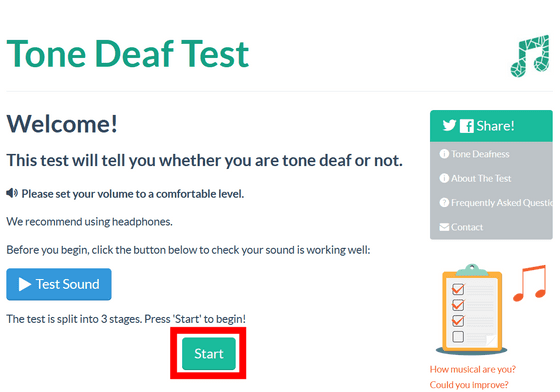
Click Yes if you are playing an instrument, or No if you are not. Your choice here does not affect the test results.
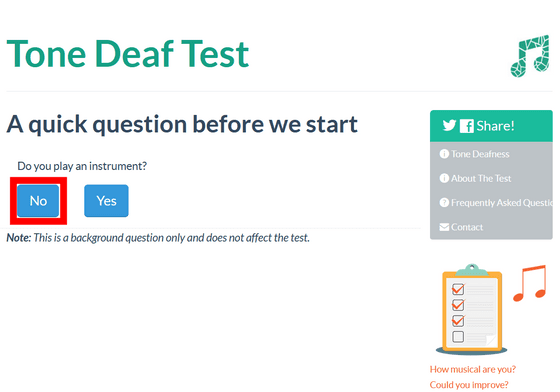
First of all, it is a problem to hear and compare whether two sounds are the same or different. Samples for the same and different cases are displayed, so play and check the sound and click 'OK'.
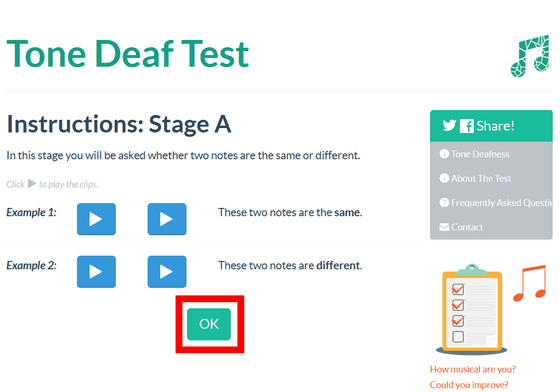
Press the two left play buttons to listen and compare the sounds, and click 'same' if they are the same, and 'different' if they are different.
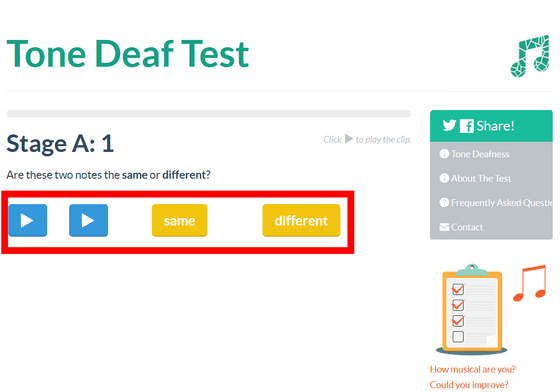
The second type of test is a question to answer whether the sound rises or falls. Select “up” if the sound of the sample goes upwards, and “down” otherwise.
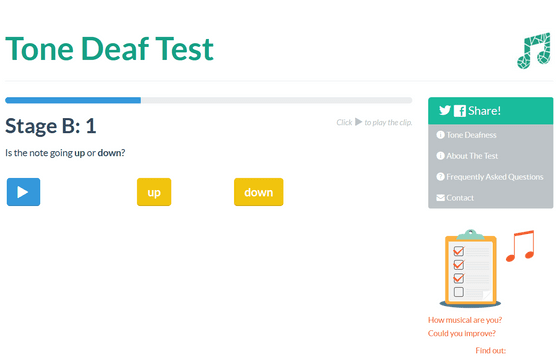
For the third type, there was also a question of listening to the sounds of A and B and choosing whether B was higher or lower.
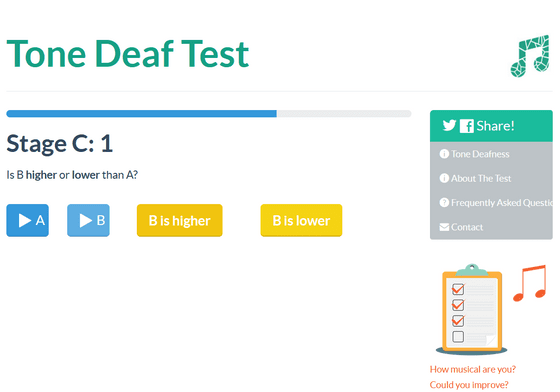
With the click of a button, I was able to diagnose if I had amusia. In the case of the editorial staff who challenged this time, it seems that it was not amusia.
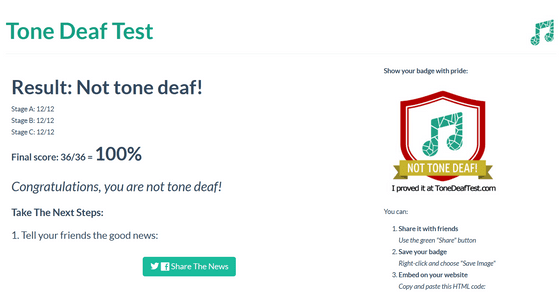
Related Posts:
in Science, Posted by log1l_ks







